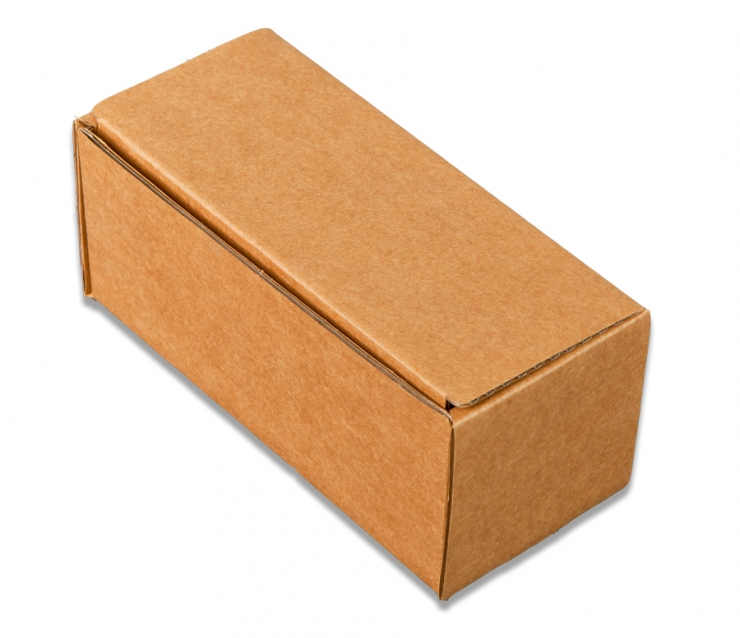
Trigonometry in 3D
We already know how Pythagoras' theorem works with 2D right-angled triangles. We know how to use it to find the lengths of sides of a triangle and in problem solving situations involving real life contexts like shadows, ladders, planes and lighthouses.
Would you believe that Pythagoras' theorem has even more applications? I wonder if Pythagoras even knew how important this theorem would be in our world, hundreds of years after it had been derived!
Well, we can use the Pythagoras' theorem, (or a derivation thereof) to help us with problems in 3D as well. To look into this a little further I think it might be best if we consider an example.
Example


Suppose we have a long rod of marble that I wish to send to my brother who is a furniture renovator. I have a box that I need to send it in, and I know its dimensions. What is the longest length of rod that will fit in the box?

The longest rod that can fit in the box with the measurements given is along the diagonal of the box. This is shown on the diagram as length $DE$DE.
We can work out the length of the diagonal $BC$BC using Pythagoras' Theorem. This is using the triangle $ABD$ABDfirst.
$BD^2=AD^2+AB^2$BD2=AD2+AB2
$BD^2=25^2+14^2$BD2=252+142
$BD=\sqrt{25^2+14^2}$BD=√252+142
$BD=\sqrt{625+196}$BD=√625+196
$BD=\sqrt{821}$BD=√821
$BD=28.65$BD=28.65cm
Now that we have length $BD$BD,(the triangle on the base) we can use Pythagoras' Theorem again to find length $ED$ED ,(the length of the long diagonal through the box). This is using triangle $EBD$EBD.
$ED^2=EB^2+BD^2$ED2=EB2+BD2
$ED^2=16^2+28.65^2$ED2=162+28.652
$ED=\sqrt{16^2+28.65^2}$ED=√162+28.652
$ED=\sqrt{256+821}$ED=√256+821
$ED=\sqrt{1077}$ED=√1077
$ED=32.8$ED=32.8 cm
So what we just did, was use Pythagoras twice, on two separate triangles.
The algebra
Lets have a look at the same idea, but without any box measurements.

The longest rod that can fit in the box is along the diagonal of the box. This is shown on the diagram as length $AD$AD.
We can work out the length of the diagonal $AC$AC using Pythagoras' Theorem. This is using the triangle $ABC$ABC.
$AC^2=AB^2+BC^2$AC2=AB2+BC2
$AC^2=a^2+b^2$AC2=a2+b2
$AC=\sqrt{a^2+b^2}$AC=√a2+b2

Now that we have length $AC$AC, we can use Pythagoras' theorem again to find length $AD$AD. This is using triangle $ACD$ACD.
$AD^2=AC^2+CD^2$AD2=AC2+CD2
$AD^2=\left(\sqrt{a^2+b^2}\right)^2+c^2$AD2=(√a2+b2)2+c2
$AD^2=a^2+b^2+c^2$AD2=a2+b2+c2
$AD=\sqrt{a^2+b^2+c^2}$AD=√a2+b2+c2

So if we know the dimensions of a rectangular prism with length (a), width (b) and height (c), then we can use the Pythagoras in 3D formula to calculate the length of the longest diagonal.
Longest Diagonal in Rectangular Prism = $\sqrt{a^2+b^2+c^2}$√a2+b2+c2
Back to our example, here are the dimensions of my box. Lets try this now using this one step rule.

Longest diagonal will have length equal to $\sqrt{a^2+b^2+c^2}$√a2+b2+c2
$\sqrt{a^2+b^2+c^2}=\sqrt{25^2+14^2+16^2}$√a2+b2+c2=√252+142+162
= $\sqrt{625+196+256}$√625+196+256
= $\sqrt{1077}$√1077
= $32.82$32.82
I can only cut accurately to the nearest centimeter so I will send a rod with length $32$32 cm. I need to round down not up otherwise it won't fit in the box!
Worked Examples
Question 1
A square prism has sides of length $3$3cm, $3$3cm and $14$14cm as shown.

If the diagonal $HF$HF has a length of $z$z cm, calculate $z$z to two decimal places.
If the size of $\angle DFH$∠DFH is $\theta$θ°, find theta to two decimal places.
Question 2
The following is a right pyramid on a square base with side length $12$12cm. A right pyramid has its apex aligned directly above the centre of its base.
The edge length $VA$VA is $23$23cm.

$W$W is the point on the base directly under $V$V. If $AW$AW has a length of $z$z cm, calculate $z$z to two decimal places.
Now, if the size of $\angle VAW$∠VAW is $\theta$θ°, find $\theta$θ to two decimal places.
Question 3
A room measures $9$9 metres in length and $6$6 metres in width. The angle of elevation from the bottom left corner to the top right corner of the room is $49$49°.
Find $d$d, the distance from one corner of the floor to the opposite corner of the floor. Leave your answer in surd form.
Find $h$h, the height of the room. Give your answer to two decimal places.
Find $x$x, the angle of elevation from the bottom corner of the $9$9m long wall to the opposite top corner of the wall, correct to two decimal places.
Find $y$y, the angle of depression from the top corner of the $6$6m long wall to the opposite bottom corner of the wall, correct to two decimal places.